News and Events
First GVT performed
EventsEvents 6th September, 2015
Ground Vibration Test on ATRA Main Landing Gear Door operated
One of the objectives in AFLoNext is the design and test of modified components in the undercarriage area to mitigate vibrations on the deployed main landing gear door. While the main landing gear is moved from down to up or from up to down, the opened landing gear doors act like small vertical wings and are stressed by the aerodynamic loads. They are excited e.g. by the wake vorticity of the blunt body of the nose landing gear deployed at the same time (see Fig.1).
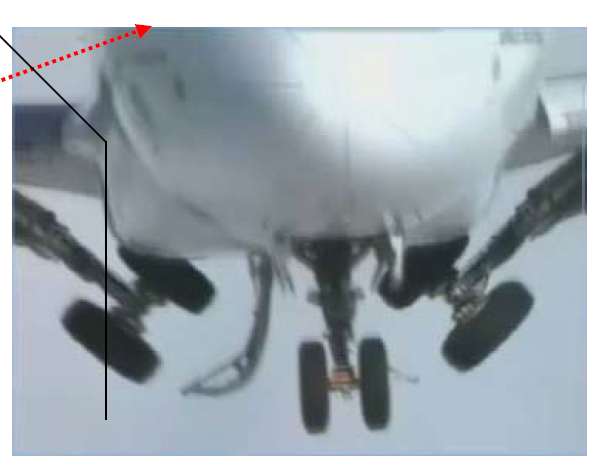
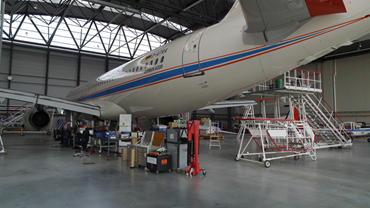
Fig. 1: Deployed landing gear of ATRA in flight and in the hangar of DLR Braunschweig.
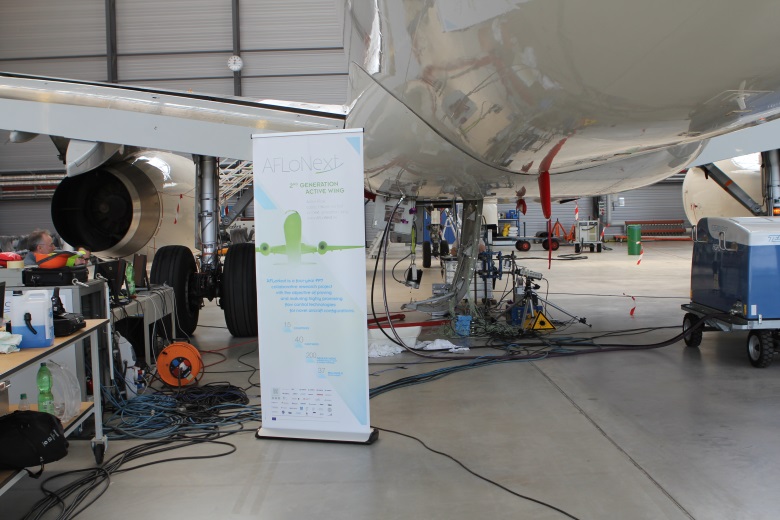
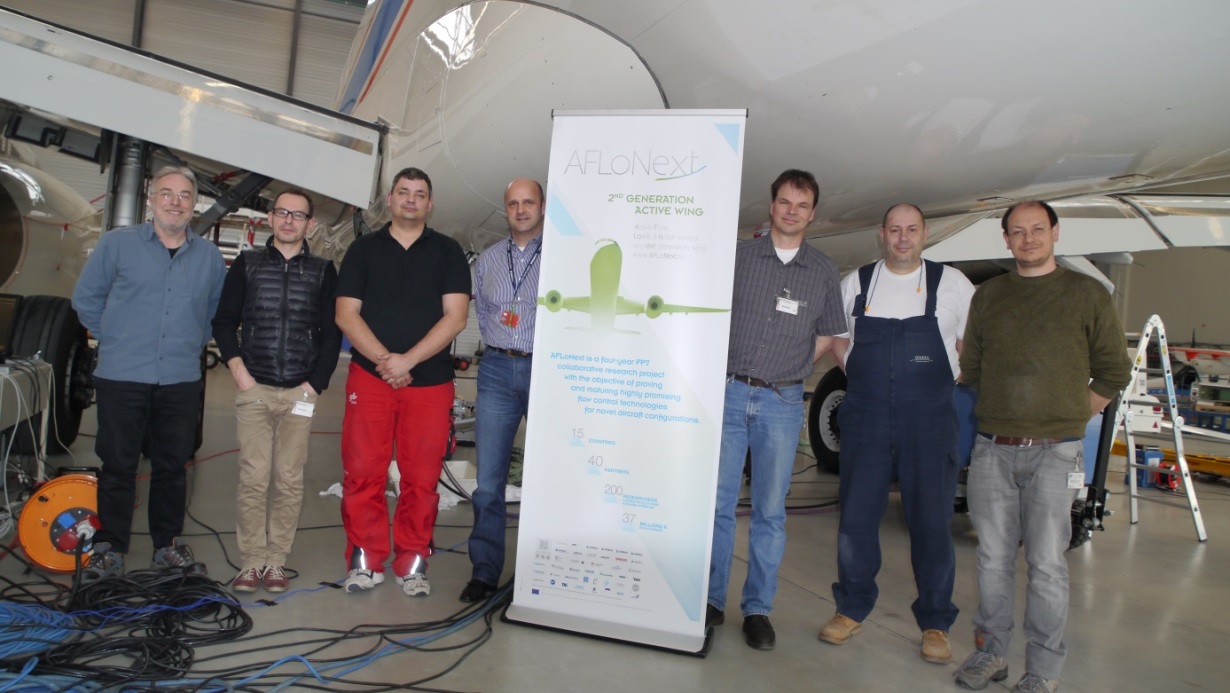
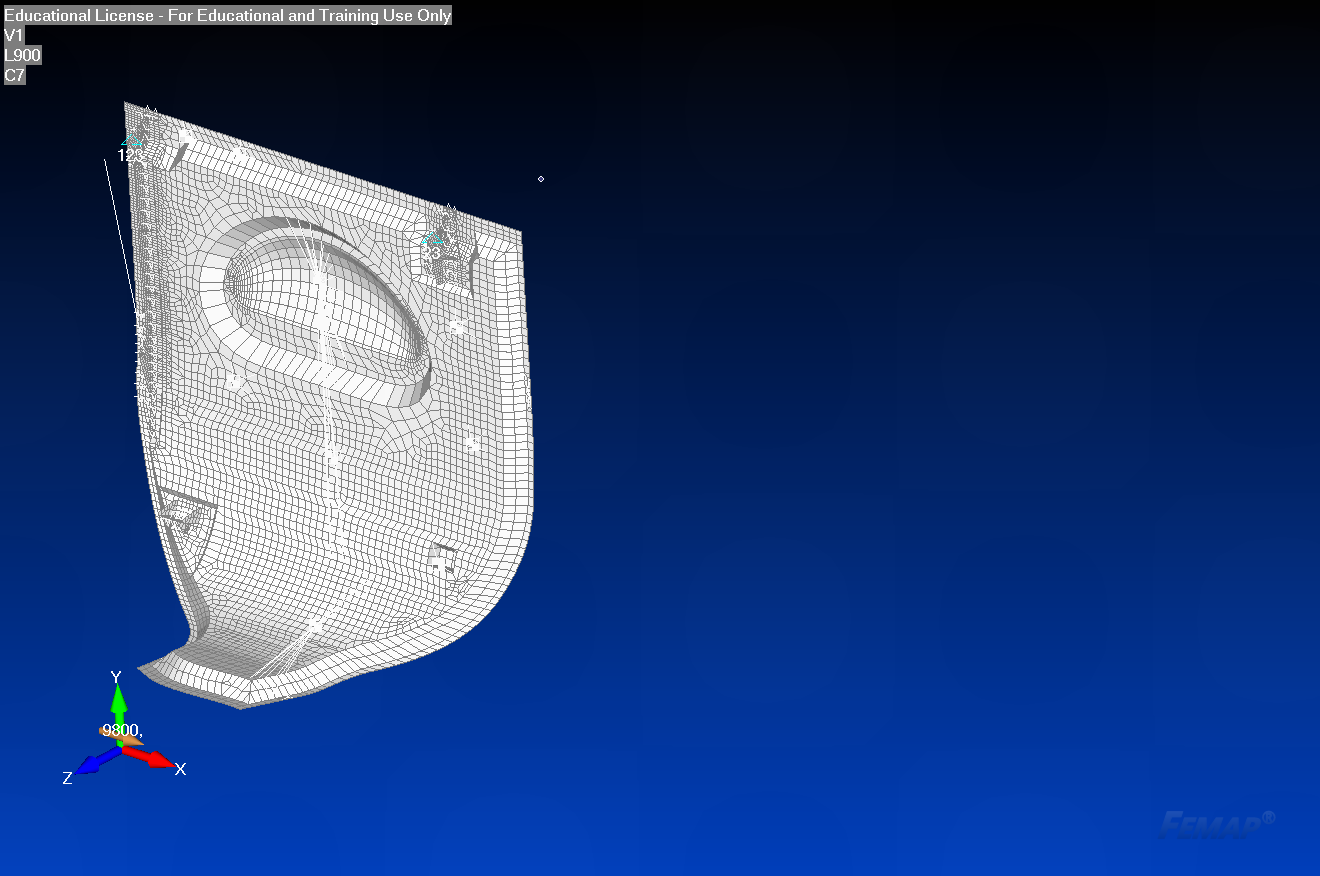
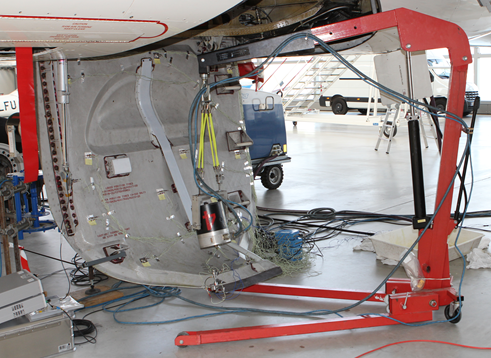
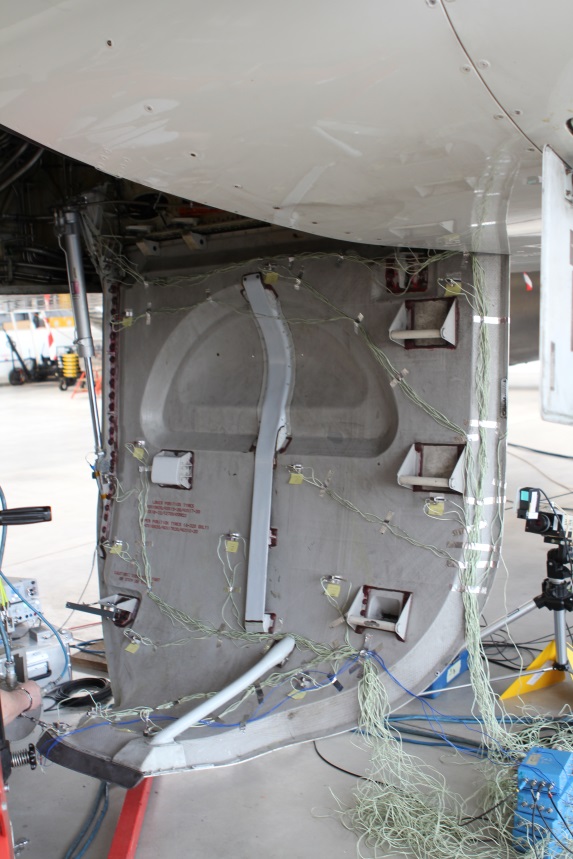
One of the objectives in AFLoNext is the design and test of modified components in the undercarriage area to mitigate vibrations on the deployed main landing gear door. While the main landing gear is moved from down to up or from up to down, the opened landing gear doors act like small vertical wings and are stressed by the aerodynamic loads. They are excited e.g. by the wake vorticity of the blunt body of the nose landing gear deployed at the same time (see Fig.1).
Most of the complex unsteady aerodynamic simulations have been completed and are currently being postprocessed to find appropriate provisions to reduce the vorticity. To start the time costly coupled fluid-structure simulations it must be assured, that the structural finite element model of the main landing gear door represents the vibration characteristics. An appropriate method to compare numerical models with the reality is to measure the modal characteristics comprising natural frequencies, vibration mode shapes and damping ratios of the real structure. In the first step the comparison is carried out without attached flow, meaning an investigation on the ground. In the second step vibration results from the AFLoNext flight test will be used to check the validity of the numerical simulations. The flight test will be started in the first quarter of 2017.
In the Easter week the combined ONERA/DLR/AIRBUS research team performed the ground vibration test on the deployed left door of the ATRA A320 aircraft (see Fig.2). The aircraft and the door was equipped with 90 accelerometers to record the structural response coming from an excitation by electromagnetic shakers which were connected to several predefined load introduction points at the tip of the door. The ONERA team brought their special vibration measurement equipment to the DLR-hangar in Braunschweig, while the hydraulic system of the aircraft was modified to feed the door actuator with predefined pressure levels supplied by an external pressure cart. After an installation and testing phase the team started to apply mono and variable frequency excitation signals to the exciters in order to identify the lowest six resonance frequencies and their corresponding mode shapes in the frequency range 5-150 Hz (see Fig.3). Prior to the test the stress experts checked the maximum allowable dynamic loads to guarantee that no damage of the aircraft structure will occur.
Since one important objective of the test is to investigate the impact of the non-linear actuator force towards the modal characteristics, the different vibration tests were repeated for three hydraulic pressure levels in the actuator between nominal and zero.
The experimentally identified natural frequencies show some deviation in comparison to the results of the finite element model, which can be attributed to the flexibility of the hinge devices on aircraft side which were not addressed in the simulation model. The ground vibration test was very successful and the schedule was in time. Now, the experts in structural dynamics start to update the numerical structural models to generate a reliable simulation base.


Fig. 1: Deployed landing gear of ATRA in flight and in the hangar of DLR Braunschweig.


Fig. 2: ONERA / DLR / AIRBUS Test Team



Fig. 3: Finite element model to be validated and real main landing gear door instrumented with accelerometers and shaker


